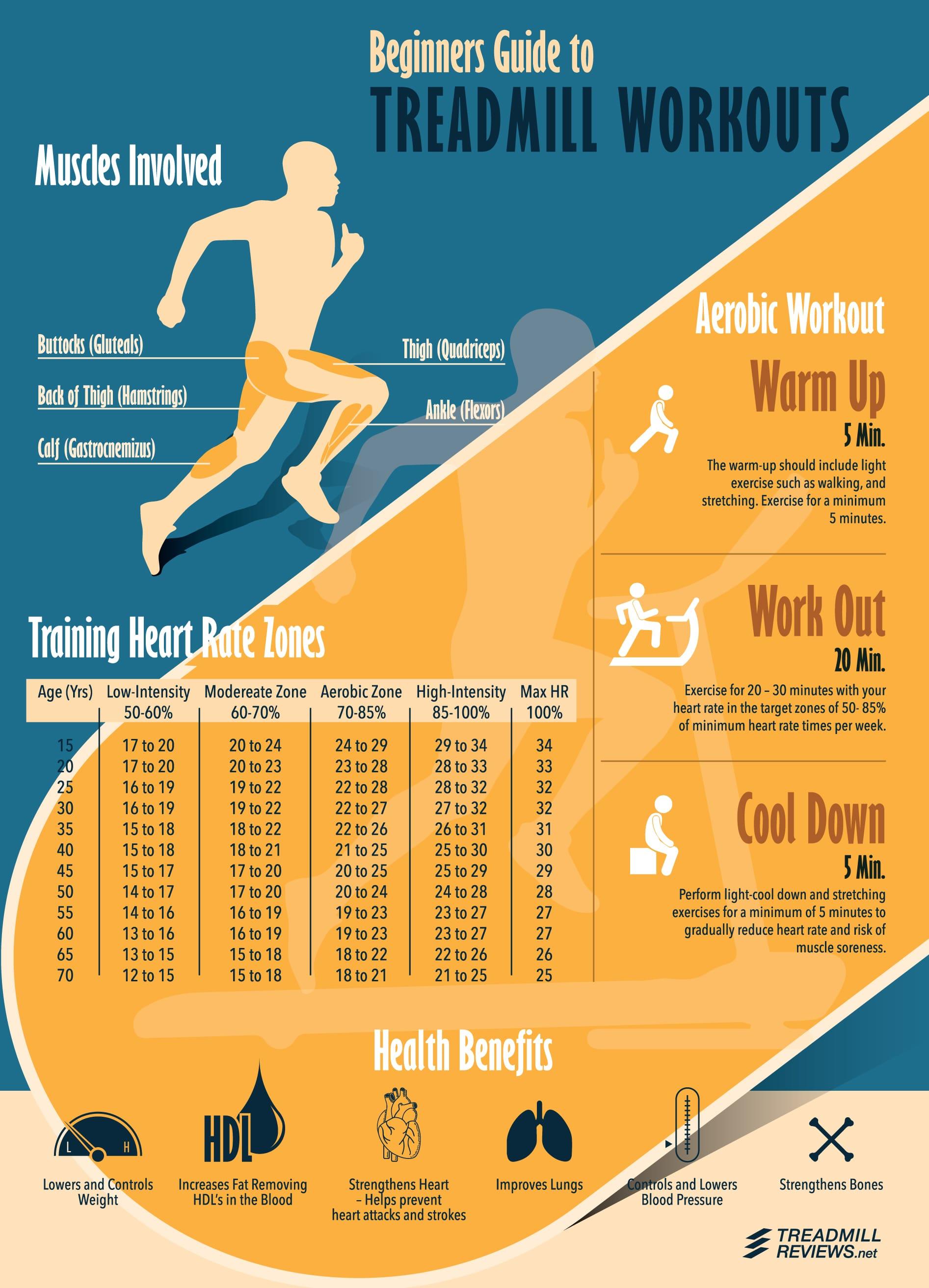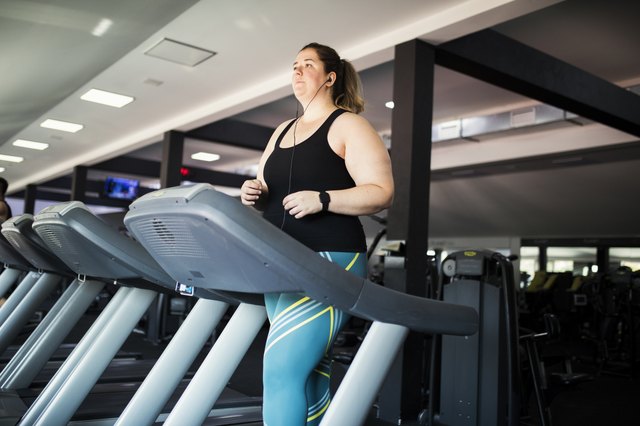The Emergence of the 12-3-30 Workout Trend
The 12-3-30 workout has gained significant traction in recent years, becoming a popular choice among fitness enthusiasts seeking a simple yet effective exercise routine. The workout’s growing popularity can be attributed to its straightforward structure and impressive results, making it a viable option for individuals at various fitness levels.
At its core, the 12-3-30 workout involves a 30-minute treadmill session with a 12% incline and a speed of 3 miles per hour. This high-intensity interval training (HIIT) routine challenges the cardiovascular system, engages multiple muscle groups, and helps users burn calories efficiently. The workout’s accessibility and adaptability have contributed to its widespread appeal, as users can modify the intensity and duration to suit their individual fitness goals and abilities.
Decoding the 12-3-30 Workout: What Does It Entail?
The 12-3-30 workout, a popular HIIT routine, is a structured treadmill session designed to challenge users and deliver impressive results. The workout’s structure consists of three primary components: a 12% incline, a speed of 3 miles per hour, and a duration of 30 minutes.
By setting the treadmill to a 12% incline, the 12-3-30 workout targets the glutes, hamstrings, and calves, providing a challenging lower body workout. The 3 miles per hour speed, although moderate, ensures that the heart rate remains elevated throughout the session, contributing to an effective cardiovascular workout. The 30-minute duration strikes a balance between time efficiency and workout intensity, allowing users to burn calories and improve their fitness levels without requiring an excessive time commitment.
The high-intensity nature of the 12-3-30 workout leads to increased calorie burn, both during and after the session. This afterburn effect, also known as excess post-exercise oxygen consumption (EPOC), occurs when the body continues to consume oxygen and burn calories to restore itself to its resting state. As a result, the 12-3-30 workout can provide a metabolism boost and promote weight loss.
How to Incorporate the 12-3-30 Workout Into Your Fitness Regimen
To effectively incorporate the 12-3-30 workout into your fitness routine, it’s crucial to consider your individual fitness level and goals. By making adjustments to the frequency, duration, and progression of the workout, you can create a personalized plan that delivers optimal results.
For beginners, starting with one or two 12-3-30 workout sessions per week is recommended. As your fitness level improves, you can gradually increase the frequency to three or four times a week, allowing for adequate recovery between sessions.
When it comes to duration, the standard 30-minute session is a great starting point. However, you can adjust the time based on your fitness level and goals. For example, if you’re aiming to improve endurance, consider extending the session by 5 to 10 minutes. Conversely, if time efficiency is a priority, you can maintain a 30-minute session while focusing on increasing the incline or speed for a more challenging workout.
Progression is another key aspect of the 12-3-30 workout. As your fitness level improves, challenge yourself by increasing the incline, speed, or duration. For instance, you might increase the incline by 1% every two weeks or add 5 minutes to your session. Remember to make these changes gradually to prevent injury and ensure continued progress.
Warm-up and cool-down routines are essential components of any workout. Before starting the 12-3-30 workout, spend 5 to 10 minutes engaging in light cardio exercises, such as brisk walking or jogging, to prepare your muscles and cardiovascular system. After the workout, perform static stretches to help your muscles recover and reduce the risk of soreness.
Comparing the 12-3-30 Workout to Other Treadmill Workouts
When exploring different treadmill workouts, it’s essential to understand the unique advantages of the 12-3-30 routine compared to steady-state cardio and other HIIT routines.
Steady-state cardio, such as jogging at a consistent pace for an extended period, is a common treadmill workout. While it can be effective for improving cardiovascular health and burning calories, it may not provide the same time efficiency and muscle engagement as the 12-3-30 workout. The 12-3-30 routine’s high-intensity intervals and incline settings challenge multiple muscle groups, including the glutes, hamstrings, and calves, leading to a more comprehensive workout in less time.
Other HIIT routines on a treadmill may involve varying speeds and inclines, but the 12-3-30 workout stands out due to its consistent structure and specific settings. This consistency allows users to easily track their progress and make adjustments based on their fitness level and goals. Additionally, the 12-3-30 workout’s fixed incline and speed encourage proper form and technique, reducing the risk of injury compared to more complex HIIT routines.
The 12-3-30 workout’s unique advantages include time efficiency, increased calorie burn, and targeted muscle engagement. By incorporating this routine into your fitness regimen, you can achieve significant improvements in your cardiovascular health, metabolism, and overall fitness level.
The Science Behind the 12-3-30 Workout: How It Impacts Your Body
The 12-3-30 workout, a high-intensity interval training (HIIT) routine, offers numerous physiological benefits, including improved cardiovascular health, increased metabolism, and enhanced muscle development.
During the 12-3-30 workout, your heart rate remains elevated due to the consistent incline and interval nature of the exercise. This elevation leads to an increased cardiovascular demand, which strengthens the heart and improves overall cardiovascular health. As a result, you may notice improvements in endurance and overall fitness level.
The 12-3-30 workout also significantly impacts metabolism. The high-intensity intervals challenge the body, causing it to consume more oxygen and burn more calories during and after the workout. This phenomenon, known as excess post-exercise oxygen consumption (EPOC), can lead to increased calorie burn and a metabolism boost, contributing to weight loss and improved body composition.
Muscle development is another benefit of the 12-3-30 workout. The consistent 12% incline targets the glutes, hamstrings, and calves, engaging multiple muscle groups and promoting muscle growth and strength. As these muscles become stronger, your overall fitness level and endurance will improve, allowing you to tackle more challenging workouts and daily activities.
By incorporating the 12-3-30 workout into your fitness regimen, you can experience significant improvements in cardiovascular health, metabolism, and muscle development. This HIIT routine offers a time-efficient, effective way to enhance your overall fitness level and achieve your health goals.
Real-Life Success Stories: Inspiring Transformations Through the 12-3-30 Workout
The 12-3-30 workout has helped numerous individuals achieve significant fitness transformations, boosting their confidence and overall well-being. Here, we share a few inspiring success stories that illustrate the workout’s effectiveness.
Sarah, a 35-year-old mother of two, struggled to find time for exercise in her busy schedule. After discovering the 12-3-30 workout, she was able to fit in quick, effective workouts at her local gym. In just three months, Sarah lost 15 pounds and improved her cardiovascular health, all while balancing her family and career responsibilities.
Mike, a 42-year-old office worker, found the 12-3-30 workout as a solution to combat his sedentary lifestyle. By committing to three 12-3-30 sessions per week, Mike noticed improvements in his stamina, energy levels, and mental clarity. Over six months, he lost 20 pounds and reduced his body fat percentage by 8%.
These success stories demonstrate the 12-3-30 workout’s transformative power, helping individuals of various ages and fitness levels achieve their health goals. By incorporating this HIIT routine into their fitness regimens, Sarah and Mike experienced improvements in their cardiovascular health, metabolism, and overall well-being.
Potential Challenges and Solutions When Tackling the 12-3-30 Workout
While the 12-3-30 workout offers numerous benefits, beginners may face certain challenges, such as stamina, motivation, and technique. Here, we provide practical solutions, tips, and resources to help overcome these obstacles and ensure a successful workout experience.
Stamina
If you find yourself struggling with stamina during the 12-3-30 workout, consider starting with shorter intervals or reducing the incline. Gradually increase the duration and intensity as your fitness level improves. Additionally, incorporating regular strength training into your routine can help build endurance and improve overall fitness.
Motivation
Staying motivated can be challenging, especially when starting a new workout routine. To maintain your drive, set realistic goals, track your progress, and celebrate small victories. You may also find it helpful to join a fitness community, where you can connect with like-minded individuals and share your experiences.
Technique
Proper form is crucial when performing the 12-3-30 workout to prevent injury and maximize results. Focus on maintaining an upright posture, engaging your core, and taking short, quick steps. If you’re unsure about your form, consider working with a personal trainer or attending a group fitness class to receive personalized feedback and guidance.
By addressing these common challenges and implementing the suggested solutions, you can confidently tackle the 12-3-30 workout and reap its numerous fitness benefits.
Maximizing Your 12-3-30 Workout: Enhancing Your Performance and Results
To optimize your 12-3-30 workout and achieve better results, consider incorporating strength training, proper nutrition, and adequate rest into your fitness routine. These elements play a crucial role in enhancing performance, promoting muscle development, and supporting overall health and well-being.
Strength Training
Strength training, when combined with the 12-3-30 workout, can help build lean muscle mass, increase metabolism, and improve overall fitness. Incorporate exercises targeting major muscle groups, such as squats, lunges, push-ups, and pull-ups, 2-3 times per week. Aim for 2-3 sets of 8-12 repetitions for each exercise.
Proper Nutrition
A well-balanced diet is essential for fueling your workouts and promoting recovery. Focus on consuming a variety of nutrient-dense foods, including lean proteins, whole grains, fruits, vegetables, and healthy fats. Stay hydrated by drinking plenty of water before, during, and after your workouts.
Adequate Rest
Rest and recovery are vital components of any fitness regimen. Ensure you’re getting sufficient sleep each night and taking rest days as needed to allow your body to recover and rebuild. This will help prevent injury, support muscle development, and improve overall performance.
By focusing on consistency, patience, and self-care, you can optimize your 12-3-30 workout and achieve long-term fitness goals. Remember, sustainable progress takes time, so be kind to yourself and celebrate each small victory along the way.








